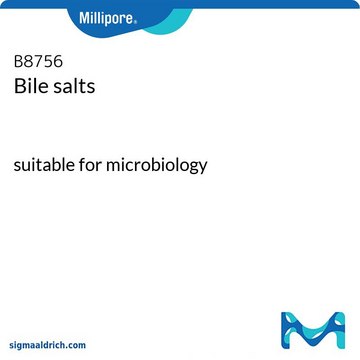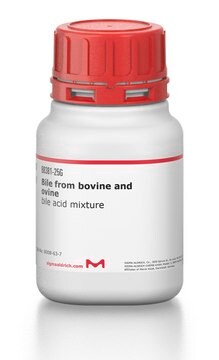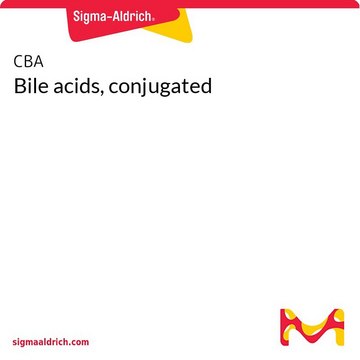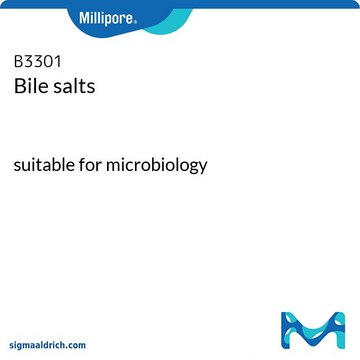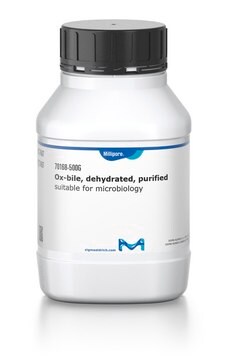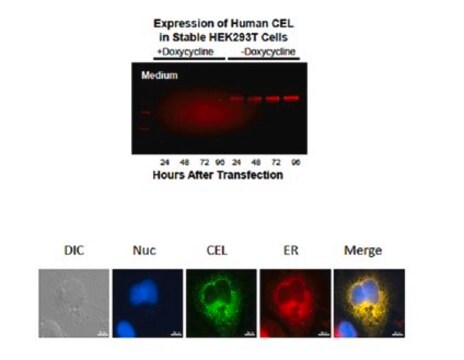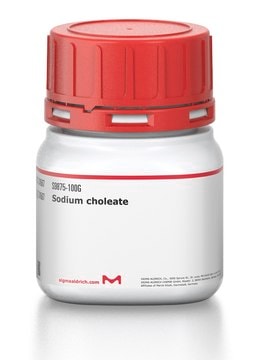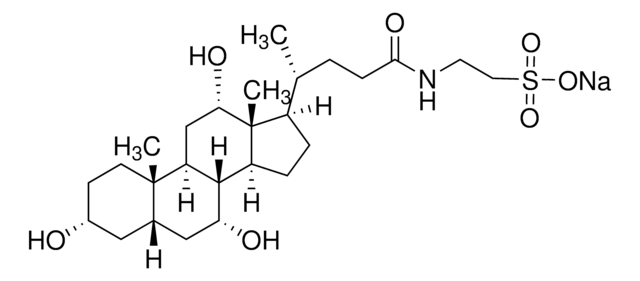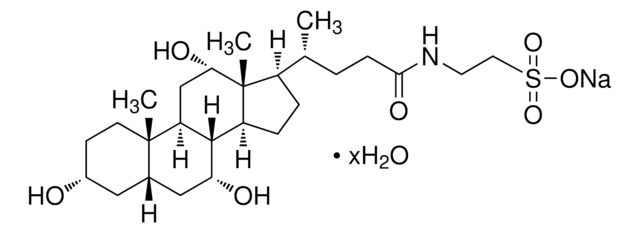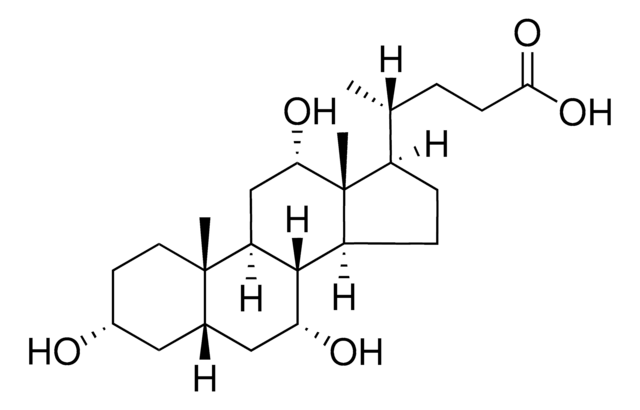48305
Bile salts
suitable for microbiology
Synonim(y):
Bile acids sodium salt, cholic acid-deoxycholic acid sodium salt mixture, Bile acids sodium salt, Cholic acid-Deoxycholic acid sodium salt mixture
About This Item
Polecane produkty
opis
anionic
Poziom jakości
sterylność
non-sterile
Próba
40-60% (Cholic Acid ; approximately 50% sodium cholate and approximately 50% sodium deoxycholate, HPLC)
Formularz
powder
skład
cholic acid sodium salt, ~50%
deoxycholic acid sodium salt, ~50%
zanieczyszczenia
≤5% water
strata
≤5% loss on drying (water)
rozpuszczalność
H2O: 0.1 g/mL, clear, faintly yellow
Zastosowanie
microbiology
temp. przechowywania
10-30°C
Opis ogólny
Bile salt is an organic sodium salt with a conjugate of any of the bile acids along with either glycine or taurine. Biles salts are composed of four different kinds of bile acids - cholic, deoxycholic, chenodeoxycholic and lithocholic acids.
Bile salts are extracted under controlled conditions from purified fresh bile, to be used in bacteriological culture media, where it behaves as a selective inhibitory agent that enables isolation and identification of pathogens. For example, in MacConkey Agar/Broth.
Zastosowanie
Działania biochem./fizjol.
Kod klasy składowania
11 - Combustible Solids
Klasa zagrożenia wodnego (WGK)
WGK 3
Temperatura zapłonu (°F)
Not applicable
Temperatura zapłonu (°C)
Not applicable
Środki ochrony indywidualnej
Eyeshields, Gloves, type N95 (US)
Wybierz jedną z najnowszych wersji:
Masz już ten produkt?
Dokumenty związane z niedawno zakupionymi produktami zostały zamieszczone w Bibliotece dokumentów.
Klienci oglądali również te produkty
Produkty
Podłoże hodowlane zapewnia środowisko z odpowiednimi składnikami odżywczymi, źródłami energii i określonymi warunkami środowiskowymi dla wzrostu mikroorganizmów. Składniki podłoża hodowlanego obejmują zarówno cukry proste, jak i peptony, sole, antybiotyki i złożone wskaźniki.
Nasz zespół naukowców ma doświadczenie we wszystkich obszarach badań, w tym w naukach przyrodniczych, materiałoznawstwie, syntezie chemicznej, chromatografii, analityce i wielu innych dziedzinach.
Skontaktuj się z zespołem ds. pomocy technicznej